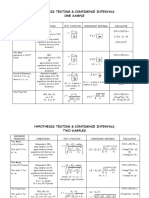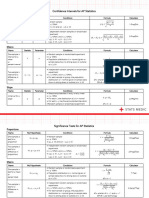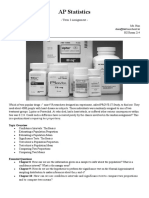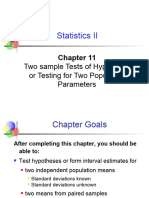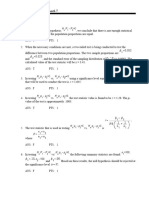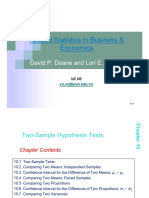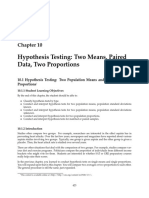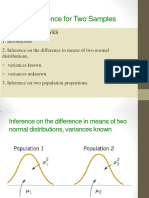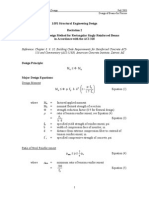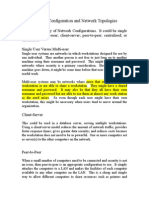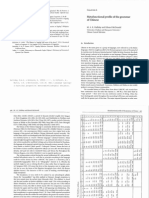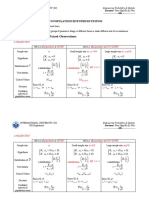0% found this document useful (0 votes)
151 views1 pageAP Statistics - Chapter 10 Notes: Comparing Two Population Parameters 10.1: Comparing Two Proportions
This document provides information about comparing two population parameters using statistical tests. It discusses comparing two proportions using a two-proportion z-test and confidence interval. It also discusses comparing two means using a two-sample t-test and confidence interval. Both tests have requirements that the samples be random, independent, and meet certain size requirements depending on if comparing proportions or means. The tests and intervals allow estimating or testing differences between population parameters.
Uploaded by
Rhivia LoratCopyright
© © All Rights Reserved
We take content rights seriously. If you suspect this is your content, claim it here.
Available Formats
Download as PDF, TXT or read online on Scribd
0% found this document useful (0 votes)
151 views1 pageAP Statistics - Chapter 10 Notes: Comparing Two Population Parameters 10.1: Comparing Two Proportions
This document provides information about comparing two population parameters using statistical tests. It discusses comparing two proportions using a two-proportion z-test and confidence interval. It also discusses comparing two means using a two-sample t-test and confidence interval. Both tests have requirements that the samples be random, independent, and meet certain size requirements depending on if comparing proportions or means. The tests and intervals allow estimating or testing differences between population parameters.
Uploaded by
Rhivia LoratCopyright
© © All Rights Reserved
We take content rights seriously. If you suspect this is your content, claim it here.
Available Formats
Download as PDF, TXT or read online on Scribd
/ 1












